Weather Lore in Croatia: Lokve Folk Calendar Predicts the Weather in 2022
January 9th, 2022 - How did people go about predicting the weather back in the day, before the invention of measuring instruments? Looking into a traditional method preserved in Lokve, a town in Gorski kotar where folk meteorologists predict the weather for the year ahead based on a short period in December
We’re a bit spoiled these days with detailed weather forecasts awaiting only a few clicks away. Have you ever wondered how people used to go about this before weather apps and modern meteorology? With no measuring instruments yet invented, they had only their environment and the skies above to rely on, giving way to a diverse body of weather folklore.
There are many folk sayings and customs related to weather in Croatia - too many for a single post. This time, we’ll focus on an old tradition that’s been passed down for generations among the people of Lokve, a town in the Gorski kotar region.
Called ‘brojanica’ in Croatian, the traditional method allows for predicting what the weather will be like in the entire year based on a short period in December - a fine example of weather lore preserved to this day.
Local folk meteorologists in Lokve carefully track weather conditions and changes during the 12 days between the holiday of St Lucia (December 13th) and Christmas Eve (24th). Each of those days is associated with one of 12 months in a year; the weather conditions recorded on a given day are taken as a forecast for the whole related month, with some adjustments to fit the different seasons. E.g. if it’s cold and sunny on St Lucia, it’s expected that the whole month of January will be cold and sunny as well.
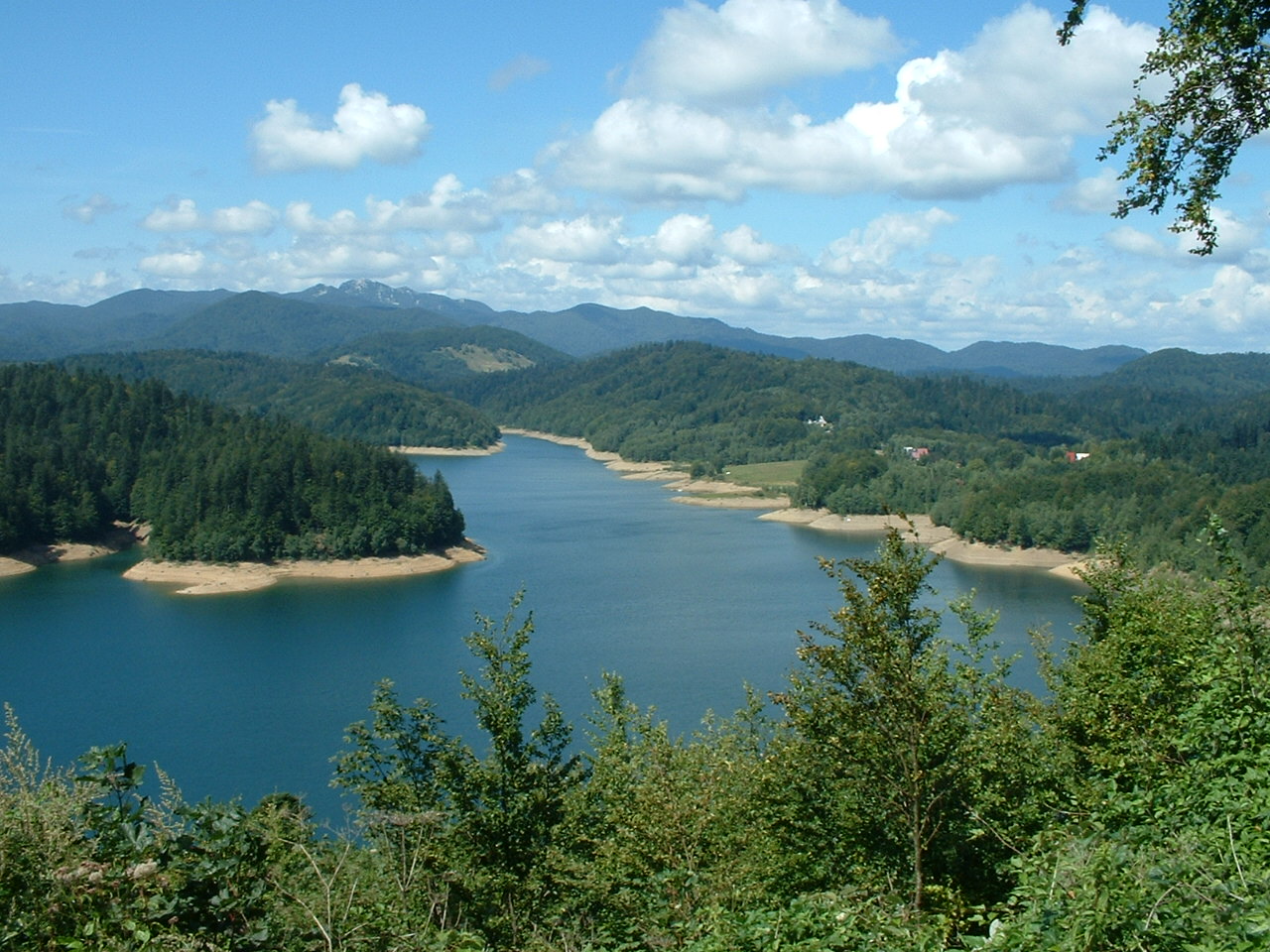
Lake Lokve / velfran
Novi list reported that the diligent folk meteorologists in Lokve kept a close eye on the weather this past December as well, resulting in publication of the 2022 Lokve calendar with the forecast for the entire year.
What awaits us in 2022? The calendar designer Nikola Pleše says we don’t have to worry about extreme weather this year.
‘Tracking of the weather conditions between St Lucia and Christmas Eve has shown that those 12 days didn’t bring any extremes, so based on our tradition and folk wisdom, we don’t expect anything too dramatic in regards to weather conditions this year’, he said.
The forecast for January has already proven to be true. ‘In the first week of the new year, St Lucia will unfurl a tall, grey fog over Lokve and only show us sunlight and moonlight in traces. From the 20th of the month, days will be clearer and calm, but colder’, says the calendar. And even though this refers to Lokve in particular, the nearby Kvarner bay has also been completely enveloped in thick fog for the first week of 2022.
In the poetic forecast for the month of February, it’s said that ‘the skies will hide behind a tall, thick fog, in which not even little birds will dare to make a peep. From February 15th onwards, the sun will rip the fog apart…’.
Not much for the people of Gorski kotar to look forward to in March either: ‘Days will remain drooly, full of fog, adorned by a rare snowflake or glistening frost’, up to March 20th when the northern winds are expected to sweep the fog away.

Come April, the weather will finally start looking up, and in May, ‘days will be bright and warm, making people, birds and plants more cheerful.’ This trend will keep up in June, as the month is to be ‘sunny and dry, already in full bloom by Midsummer’s day (Ivanje), and more humid and hot towards St Peter’s Day (Petrovo).’
A lot of wonderful summer weather in July and August as well, leading to a bountiful harvest in September. ‘It will be a sunny, clear month, smelling of the abundance of everything we’ll have planted in Lokve soil this spring’, says the forecast.
And that’s about it when it comes to nice weather in Lokve this year. The last three months of 2022 will supposedly be quite damp, same as in the beginning of the year. A lot of fog, frost, and cold wind are expected in autumn, but it won’t be too cold until late December when the southern jugo wind will be replaced by the dry bura wind that will have the temperature drop sub zero and usher in the winter season.

The weather forecast for this year’s weather calendar was created by Mirjana Pleše and her daughter Ivana, Andreja Marković, Tanjica Šafar, Marijana Rakas and Eleonora Grgurić, with Nikola Pleše behind the calendar’s graphic design.
Beyond the folk traditions, Lokve is a fantastic destination for a day trip that will delight any fans of outdoor activities. The town is home to the cave Lokvarka, the deepest cave in Croatia open to the public. Not a fan of subterranean strolls? Head to the nearby Lake Lokve (Croatian: Lokvarsko jezero) for a scenic walk or a bike ride with a view. Make sure to contact the local tourist board beforehand, though - the (artificial) lake will be drained for a period of time in 2022 for regular maintenance, so you might as well know what kind of view to expect during your visit!
High Prices in Croatia Won't Win 2022 Tourist Season as Mediterranean Competitors Return
January 8, 2022 - High prices in Croatia won't work for the upcoming tourist season as Mediterranean competitors came back into the game.
Croatian travel agencies are once again facing another challenging tourist year. Boris Žgomba, president of the Association of Travel Agencies at the Croatian Chamber of Commerce (HGK), said that Croatian tourism hopes for better results in 2022 than last year, but a fight awaits for every guest as other Mediterranean countries return with possible lower prices than Croatia, reports Novi List.
"Behind us is a very bad 2020 and surprisingly good 2021 compared to what was expected. However, this year is uncertain, partly due to the spread of the virus in the first days of the year, and partly due to the expected return of our closest competitors in the market," says Žgomba. Namely, he said that apart from Croatia, most other destinations and countries are preparing for better results, including returning traffic to the level of approximately 2019. Furthermore, according to the announcements, strengthening air traffic is expected. This means that Croatia cannot afford the high price jumps in 2021, which was justified by increased demand.
But also the fact that in the last two pandemic years, Croatia enjoyed a specific privileged position when it comes to epidemiological conditions, and it also positioned itself as a car destination. However, it seems that Croatia is no longer safe in that position because it is expected that other countries will be in a better epidemiological situation than they were last year. And that means that the fight for each guest will be more complex than ever.
As for tourist agencies, he said their business was significantly affected by a higher number of individual tourist arrivals during the pandemic than organized tours. Therefore, in 2022, the agencies would welcome job preservation measures, at least until the end of March and the beginning of April, to bridge the time until spring and the beginning of stronger tourist traffic.
According to the Association of Croatian Travel Agencies (UHPA), UHPA member agencies in the first ten months of 2021 recorded a decline in traffic of about 70 percent compared to 2019, which is a slight recovery compared to 2020 when the drop was about 90 percent. But it is far from recovering, and agencies remain among the hardest-hit part of the tourism sector.
Therefore, they are still on state support and hope that the continued impact of the pandemic on business will continue to help preserve jobs at least until April 2022.
"Most agencies have survived the corona crisis, primarily with government action, but many have exhausted a variety of financial options, from loans to property sales, so we still need action, at least until April 2022, to survive until spring when we expect some tourist traffic," said the UHPA at the last annual Assembly.
However, the agencies also expect that traffic will be difficult this year, especially since the pandemic is raging worldwide and thus throughout Europe, which has already been felt in reservations and payments for skiing and winter holidays through agencies, which went well in the autumn. Skiing was expected to return to pre-pandemic figures, but as the epidemiological situation worsened, bookings fell, and there were last-minute cancellations.
It should also be added that the specificity of agency business is based on the tourist offer and services created for specific market niches whose realization is related to periods outside the tourist season, such as group travel, congress tourism, and school travel, which were also in sharp decline last year.
Also, many agencies specialize in creating and providing services for specific foreign markets from which, or according to which, due to travel restrictions, it was not possible to realize trips such as Asia, Australia, Canada, and so on.
For more, check out our dedicated travel section.
First Croatian Baby of the New Year Was Born in Split!
January 1, 2022 - As is the tradition in many parts of the world, most wonder who will be the first baby to be born in the year, and where. Here, we already know: the first Croatian baby in 2022 is a little girl born in Split.
As reported by 24sata.hr, the first Croatian baby to be born in 2022 is a little girl from Split, who came into the world just a minute after midnight. The baby was born by natural childbirth, and her mother is native of the island of Brač. The little one is the fourth child in the family, the fourth girl, and as we are told from the maternity ward, both mom and baby are feeling well.
Split-Dalmatia County Prefect Blaženko Boban visited the Clinic of Obstetrics and Gynecology, accompanied by the Director of KBC Split Julije Mestrović and the Head of Department dr. Marko Mimica, and donated a commemorative basket with sweets, and the first-born baby was given a gold coin, this year, with the figure of Marko Marulić.
In 2021, a total of 4410 babies were born in the maternity hospital in Split, which is about 200 more than in the previous year, 2020.
At 1:08 a.m. in the Rijeka maternity hospital, Martina Požarić from Lovran gave birth to a baby girl, Nevija. The first baby from Rijeka born in 2022 weighs 3250 grams and is 49 centimeters long, reports HRT News.
This is the third birth for Mrs. Požarić, with whom she was accompanied by her husband, and it is interesting that she decided to give birth on a chair, sitting in a natural position. According to doctor Barbara Borovac and midwife Tamara Luksetić, the birth went well, the Rijeka Clinical Hospital announced.
The Mayor of Rijeka, Marko Filipović, sent congratulations, flowers, and a special gift to the first baby born in Rijeka in 2022 and to her parents - a silver medal of St. Life.
The traditional New Year's visit of the mayor and his associates to the Rijeka maternity hospital was not held due to compliance with epidemiological measures.
The first baby in the Vukovar hospital was born at 1:15 am. She was born 2760 grams, 48 centimeters long. She is the second baby of Sandra Đurić, and the name of the baby girl is Ana.
The first baby in the Vinkovci County General Hospital was born last night at three hours and twenty minutes. The mother is 28-year-old Ivona Crljić, and the baby's name is Lucija. She was born 3,980 grams and 51 centimeters in length.
Total Croatia News wishes to congratulate parents and their newborns, and we wish them good health!
For more, check out our lifestyle section.
Croatia in 2022: 10 Things to Look Forward Next Year
December 30, 2021 - The pandemic continued to hamper many, many sectors of the country in 2021, but there were also reasons to believe that next year will help us move past the troubles with ease. An overview of the reasons to look forward to Croatia in 2022.
2022 is just around the corner, and for the vast majority, uncertainty continues to prevail over the rest of the sensations for the new year. However, while the pandemic continues to pose a threat to the country's public health and economy, there is an air of optimism for the coming year. The premise that I hear most often is that 2022 will definitely be better than 2020 and 2021. And yes, well, there are reasons to believe in it. These are some of the ones that I think invite us to believe.
COVID-free travel (?)
We will begin the count with a reason that is still ambiguous in many ways. While travel restrictions in Europe are currently more flexible than last year or 2020, the Omicron variant and low vaccination rates in many European Union countries continue to create uncertainty regarding the next steps to take.

Photo: Zeljko Lukunic/PIXSELL
Despite the fact that COVID-19 continues to affect travel restrictions, the trend in the last two years appears to be positive. In 2020 tourism was affected almost insurmountably. Borders were closed, flights were limited, cruises quarantined, very few tourists arrived, restaurants closed, and more. However, in 2021 and with the arrival of the vaccine, the situation improved considerably and little by little the restrictions were relaxed. The EU COVID digital certificate and the ECDC map helped establish appropriate parameters for the arrival and departure of foreigners to the territory of each country, depending on the situation of COVID cases in the countries of origin. The numbers were still far from those of the last year without a pandemic, 2019, and that is why the season arrived a bit late at the end of June. However, the months that followed saw a massive influx of tourists and flights from all over the world. Even in October a lot of tourist movement could be observed.
If the percentage of the vaccinated population increases in Croatia and epidemiological measures continue to be promoted to guarantee the country as a safe destination, it is very likely that the number and variety of flights will start to increase, and the season could be expected to start early as in May.
Pelješac Bridge
What was longed for for so many years, this year finally came true. The last segment of the Pelješac Bridge was completed, and the reconnection between Croatia and Dubrovnik was celebrated in a symbolic act. The bridge, whose construction began in mid-2018, cost more than 400 million euros and has a total length of 2,404 meters and a height of 98 meters.
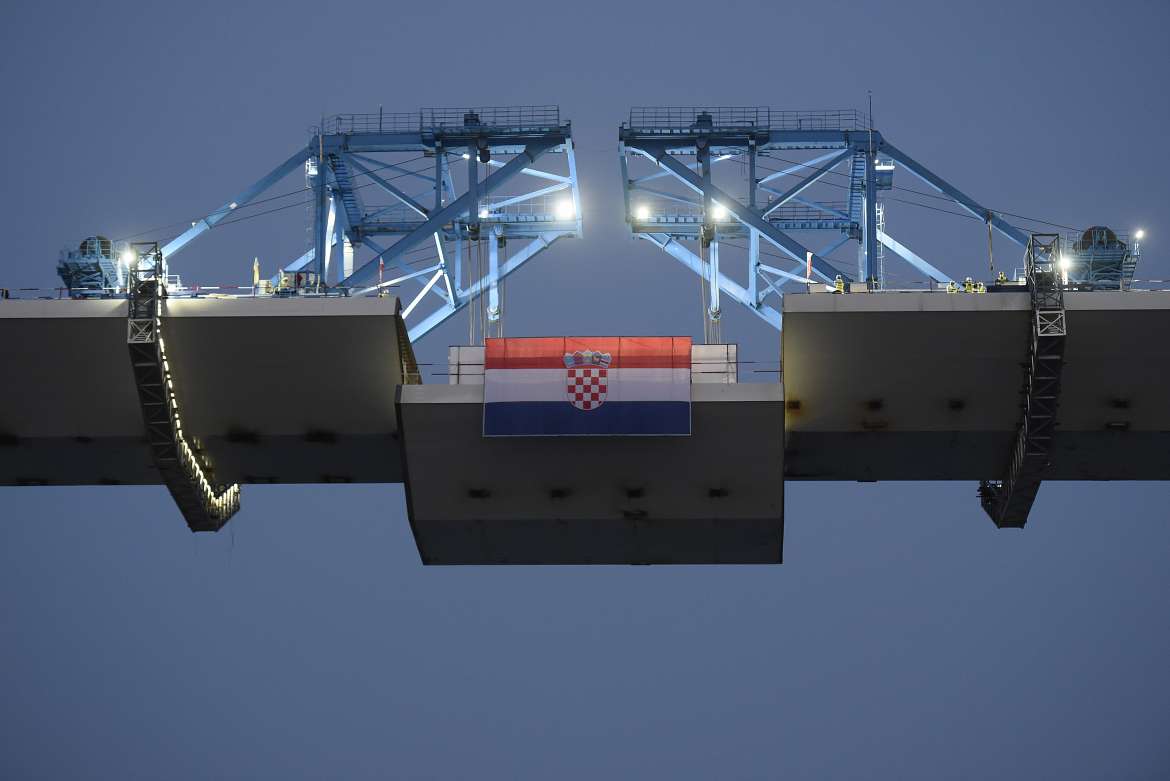
Photo: Mario Strmotić/HINA
The bridge will start at Komarna, 26 km south of Ploče, crossing the Neretva canal and Mali Ston bay, to reach the Pelješac peninsula and continue all the way down to Dubrovnik. In this way, the Pearl of the Adriatic will be 100% accessible through Croatian territory, and that is how the Neum corridor in Bosnia will no longer be the only way to reach the Croatian city.
The bridge is expected to open in June 2022, and will definitely revolutionize tourism on the southern coast of Croatia.
Concerts and Festivals
The music events sector was, without a doubt, one of the hardest hit by the pandemic. Many businesses sought to adapt to epidemiological conditions, but the concerts were simply impossible to carry out due to the impossibility of guaranteeing social distancing due to the crowding of spectators.
However, 2022 promises the return of festivals that had to be canceled due to the coronavirus, such as Ultra in Split, or INmusic in Zagreb. Also, great concerts have already been confirmed for next year, such as Future Islands (March 3rd at Tvornica, Zagreb), Iron Maiden (May 22nd at Arena Zagreb), or The Cure (October 27th at Arena Zagreb).
FIFA World Cup in Qatar
The Croatian national team closed 2021 in a good way, securing their ticket to the next World Cup, achieving direct qualification by beating Russia 1-0 in Poljud. In this way, the Vatreni avoided the European play-offs and, therefore, unnecessary anguish as in past editions.
Despite not being able to repeat what they achieved in the 2018 World Cup at EURO 2020, Dalić's team found in the second half of this year an opportunity to evolve, combining the player base that achieved second place in Russia, such as Modrić, Lovren, Vida, Perišić, Brozović, Kramarić or Kovačić, with others who made good use of their opportunities, such as Sosa, Livaja, Gvardiol, Juranović, Vlašić, and Pašalić.
Whilst it is still unknown who Croatia will face in the group stage, there is every reason to believe that they will be able to play a good role in Qatar. The World Cup will be held in November-December, which could generate more energy in the post-season, especially in coastal cities.
Schengen area
Next year is an important one, as a decision is expected regarding Croatia's access to the Schengen area, which would allow the abolition of all passports and all types of border control, improving accessibility to and from Croatia from the other 26 member states, as well as many other foreign countries.
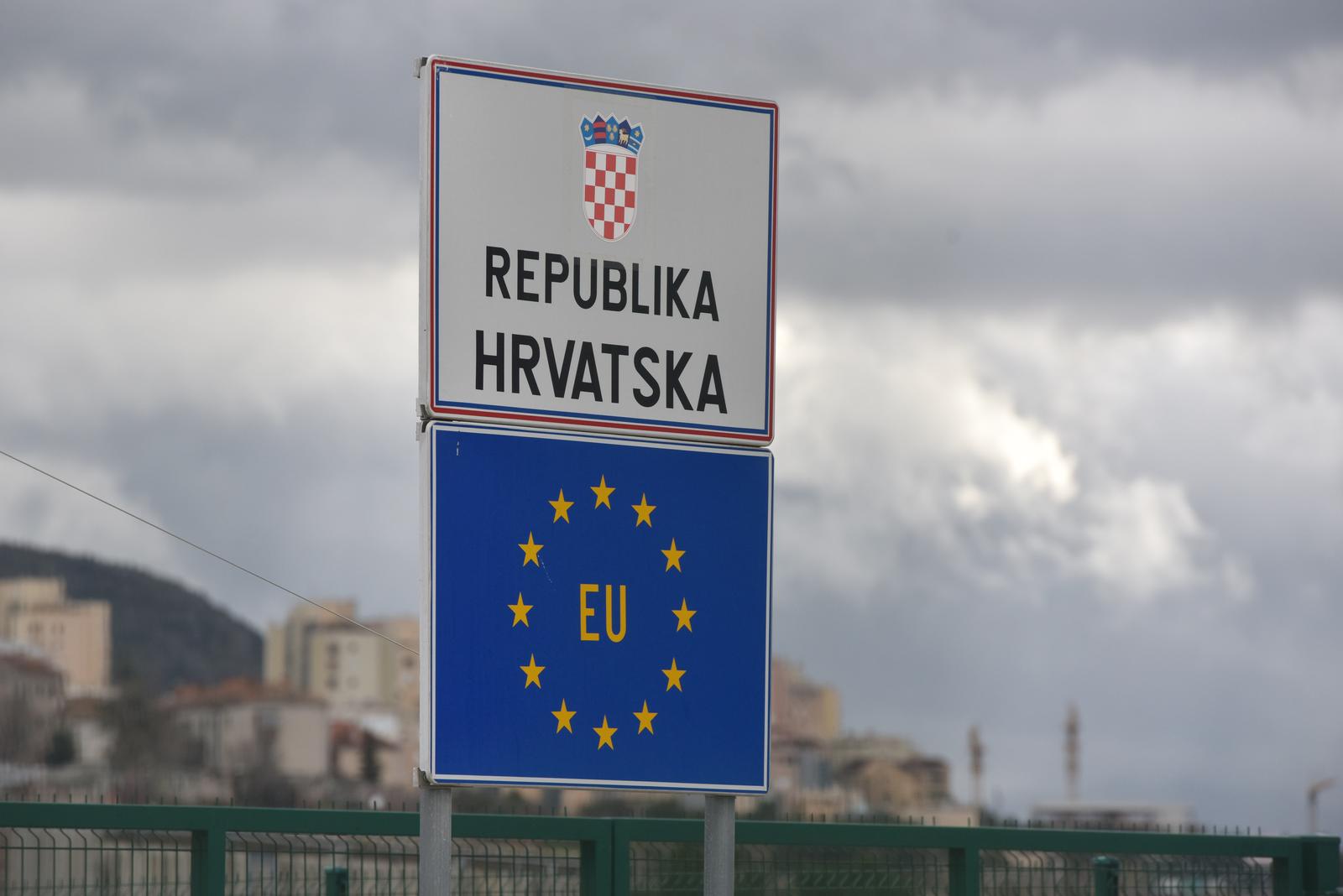
Photo: Hrvoje Jelavic/PIXSELL
In 2021, Croatia received visits from the President of the European Commission, Ursula Von der Leyen, who gave the go-ahead to the National Recovery and Resilience Plan (NPOO) presented by the First Croatian Minister Andrej Plenković for the period 2021-2026; as well as the President of France, Emmanuel Macron and the Prime Minister of Spain, Pedro Sánchez, who, like Von der Leyen, expressed their support for Croatia's accession to the Schengen area.
Eurozone
The Euro will become the official currency of Croatia from 2023. According to the Croatian National Bank, in the first quarter of 2023, the kuna will begin to be collected and the Euro circulated instead. 2022 will therefore be a decisive year for the Ministry of Finance, as well as all attached entities, to organize a subtle and appropriate transition and to avoid economic repercussions.
The Governor of the Croatian National Bank, Boris Vujčić, announced that starting next summer, prices in stores should already be displayed in both kuna and euros. Croatian Finance Minister Zdravko Marić announced from his side that they will closely monitor the process to ensure that prices are fair and control the inflation rate. A law introducing the Euro is expected to be presented in April 2022.
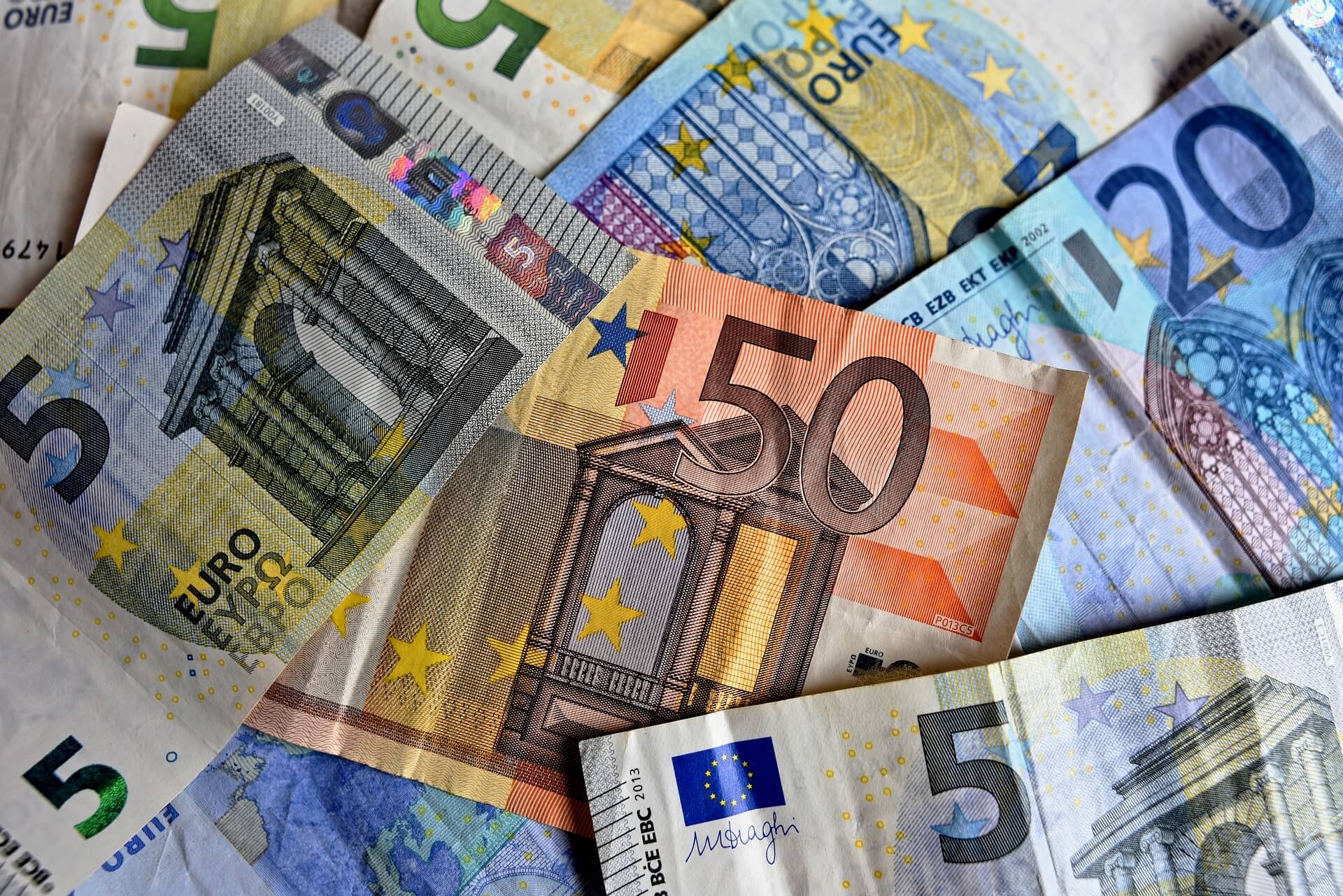
Photo: Pixabay
Again, it is important that in 2022 the Government constantly and transparently report the benefits and positive aspects of the Euro, in order to achieve general support from the population. It should be taken into account that a national collection of signatures was recently carried out to postpone access to the Euro.
US visa-free travel
In the last quarter of 2021, Croatia's access to the United States Visa Waiver Program was made official, which meant that, as of December 1, Croatian citizens can travel to the American country without the need for a Visa.
The measure comes at a time when the travel situation between Croatia and the United States has improved considerably, taking into account the success of United Airlines' New York-Dubrovnik flights in the summer of this year, which have been extended until October. of the next year.
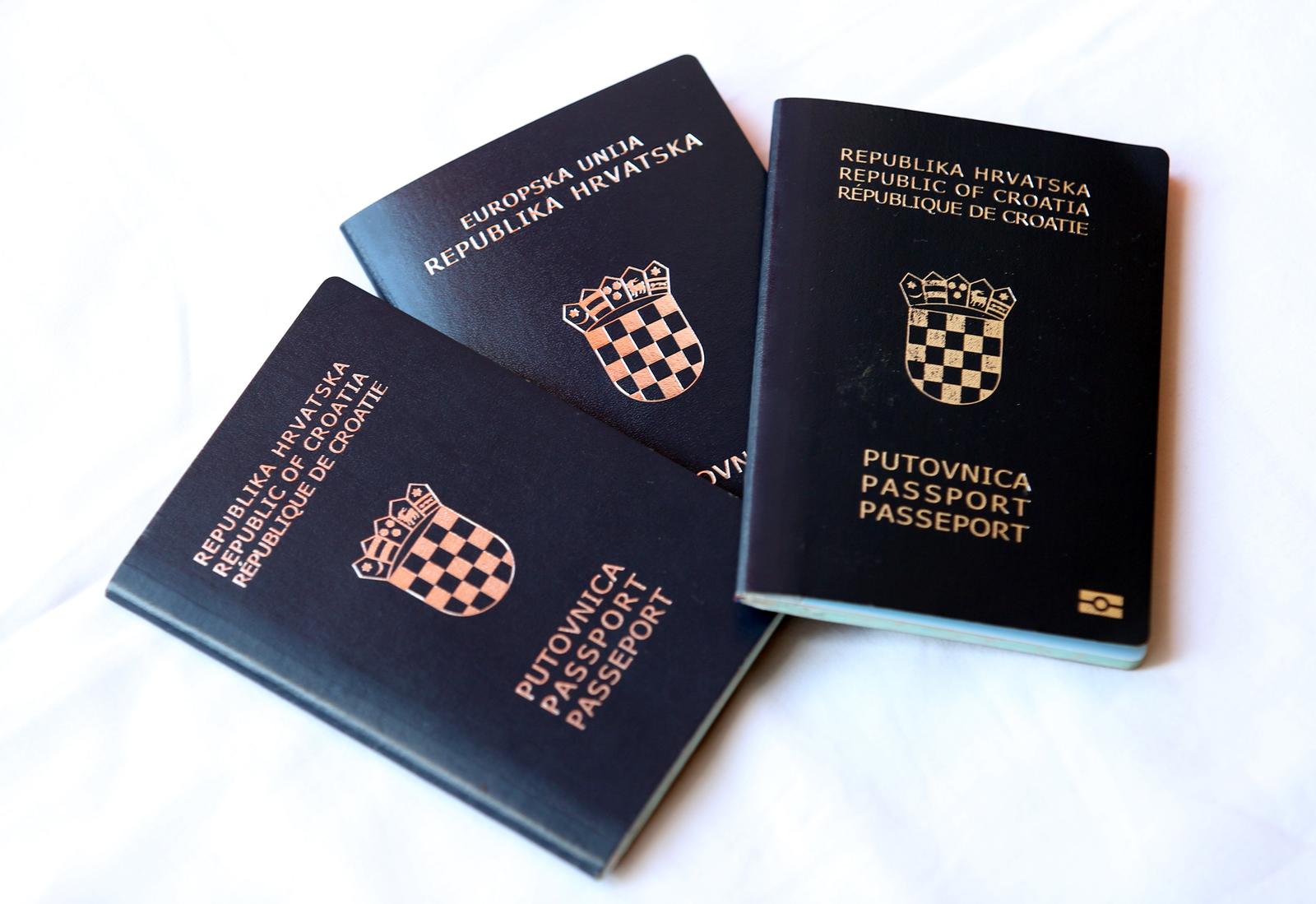
Photo: Dusko Jaramaz/PIXSELL
It is very likely that, considering the evolution of the epidemiological situation, we can see in 2022 a large migratory movement between the two countries.
Winter tourism in Split
I have spent two winters in Split since arriving in Croatia in 2019, and I still don't understand how the city and the county can completely shut down once the season is over. The number of opportunities to successfully show Split as a winter destination invites us to take a step forward, despite the frustrated attempts of the past.
So this year, four women from Split laid the foundations for a meeting that could be decisive for the future of winter tourism in Split: Daniela Rogulj from Total Croatia News, Jasmina Garbin from Chops Grill, Maria Mustapic from Zinfandel, and Jelena Tabak, President of the National Association of Caterers.
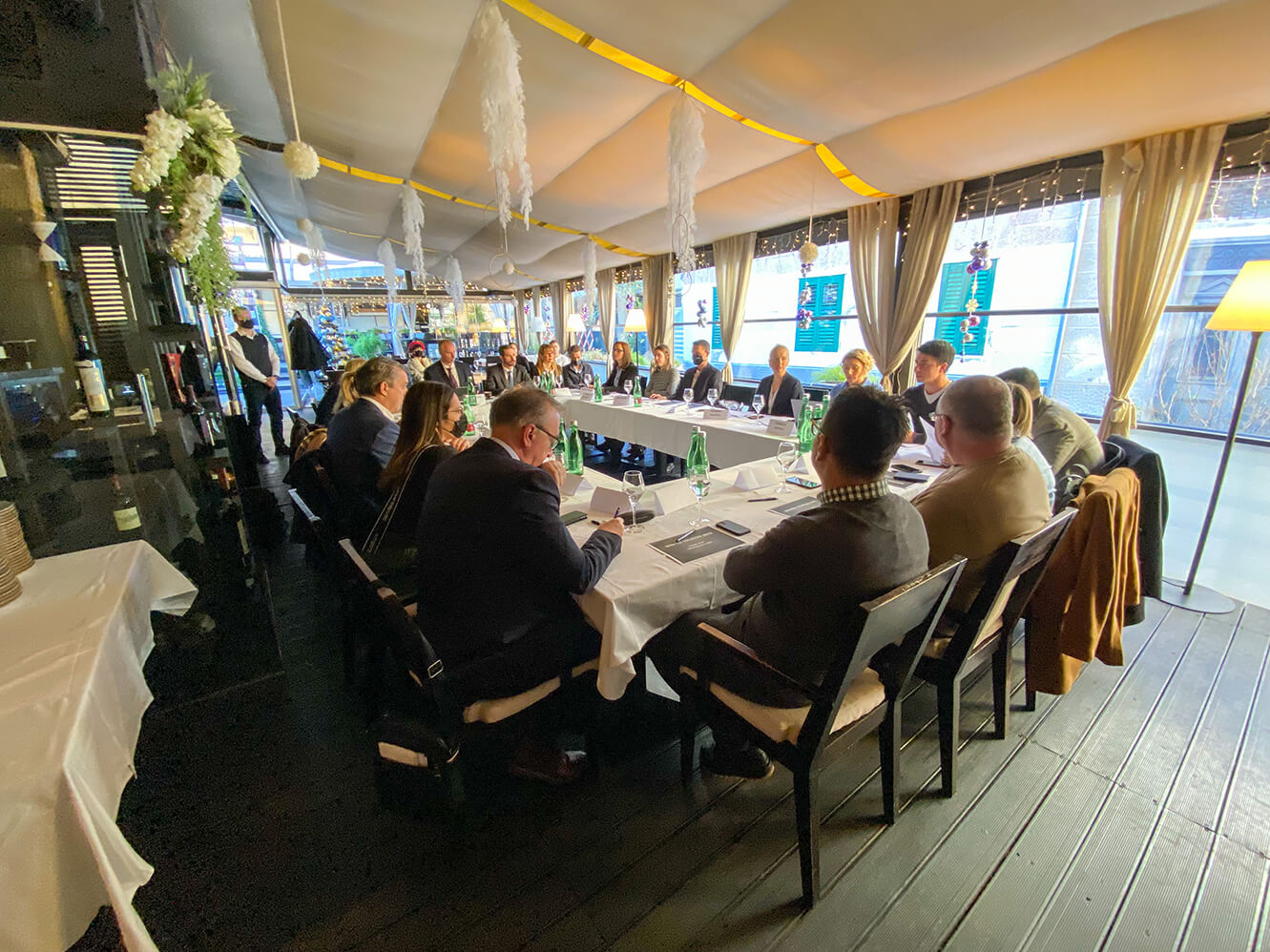
Photo: Jose Alfonso Cussianovich
A series of meetings and research led to the realization of a round table that brought together Ivica Puljak, Mayor of Split, Tonči Glavina, State Secretary of the Ministry of Tourism, Alijana Vukšić, Director of Split Tourist Board, Joško Stella, Director of Split -Dalmatia County Tourist Board, Pero Bilas, Deputy Director of Split Airport, Joze Tomaš, President Split-Dalmatia County Chamber of Economy, and different representatives from the hospitality and catering sectors.
The meeting left very good impressions, and after all concerns were expressed openly, a very positive atmosphere was created where solutions and proposals for collaboration between the public and private sectors were exchanged. Now, it is a matter of words being translated into action, and that the city of Split, Split-Dalmatia County, and the restaurants and hotels of Split work together next year to extend the season until November.
Diaspora
The return of the diaspora to Croatia has been happening since the country became independent in 1995. However, in recent years, the number of migrants of Croatian descent who decided to return to their motherland has increased significantly.
In South America, one of the continents with the highest number of Croatian diaspora, many factors have interceded to motivate many of them to try their luck in Croatia: insecurity on the streets, political and economic instability, and the precarious health system, especially in the wake of the pandemic. Through state-organized incentives and programs, such as the Croatian Language Scholarship, many come to the cities of Zagreb, Split, Rijeka, and Osijek to discover more about their roots, regularize their citizenship, and adapt to Croatian society and culture.
The arrival of the diaspora means a positive contribution to the social and economic development of the country, considering that Croatia also faces a complicated reality in which a large part of its youth decides, year after year, to seek better salary and work opportunities in other countries like Germany, Ireland, or the United States.
Digital Nomads
This year marked a before and after for the Digital Nomads community in Croatia. At the beginning of 2021, the Digital Nomads Permit was presented, granting the possibility that those interested can reside and work in the country for one year. While it is true that a higher number of arrivals was expected, it is important to take into account the existing travel restrictions and the epidemiological situation.
The events and initiatives carried out throughout this year and in almost all parts of the country show the growth of a community and a global interest that has no ceiling: Digital Nomads in Residence in Dubrovnik, the Zagreb Digital Nomad Week, the Ambassadors project Digital Nomads of Zagreb, the Valley of Digital Nomads in Zadar, etc.
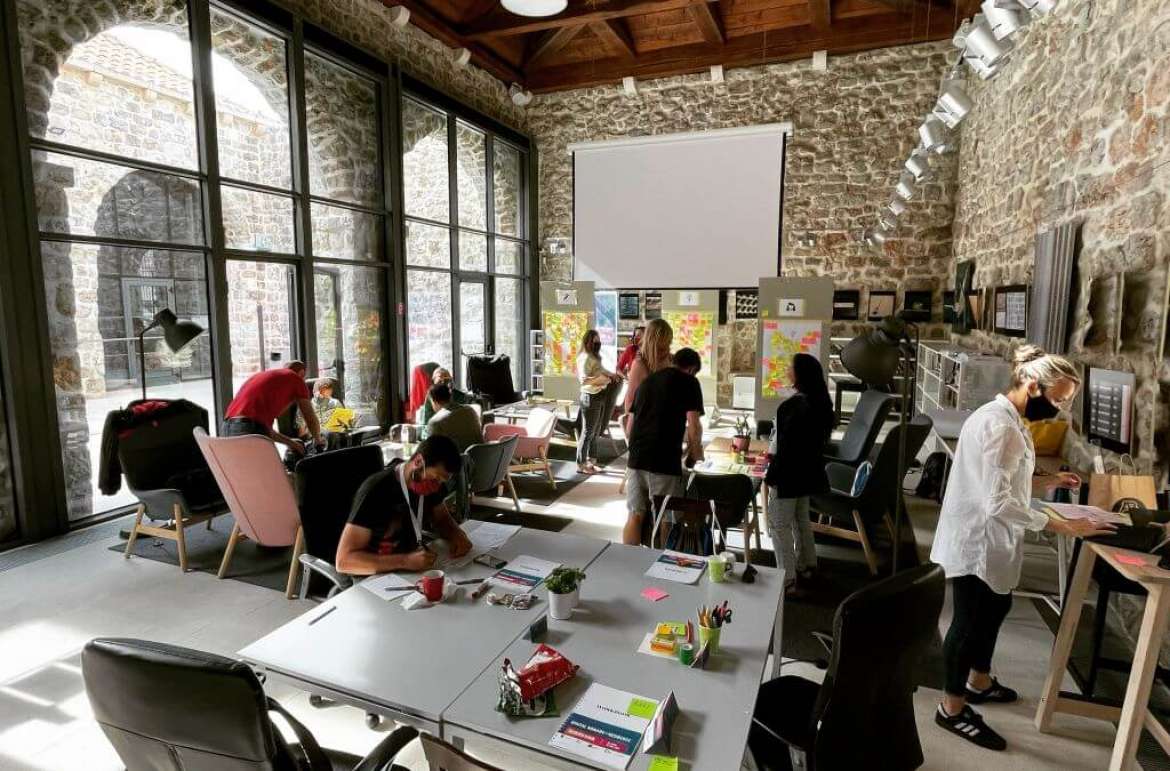
Likewise, the testimonies and experiences of dozens of Digital Nomads in different regions of the country, as well as the interest expressed by many of them to access the permit starting next year, generate a lot of hope. More events are expected to take place, more coworking venues built, and more initiatives such as CROMADS, which seeks to present Croatia as a country rich in activities throughout the year, will continue to attract more Digital Nomads in 2022.
To get the best start to the year, be sure to follow Total Croatia News on Instagram, Facebook, LinkedIn, and Twitter. For more information about Croatia, its destinations, and everything you need to know before traveling, visit Total Croatia. If you want to know everything that Croatia has to offer you twelve months of the year, visit our new portal, CROMADS. For more news about Croatia, click here.
Total Croatia News wishes all of our readers and subscribers a Happy New Year!


